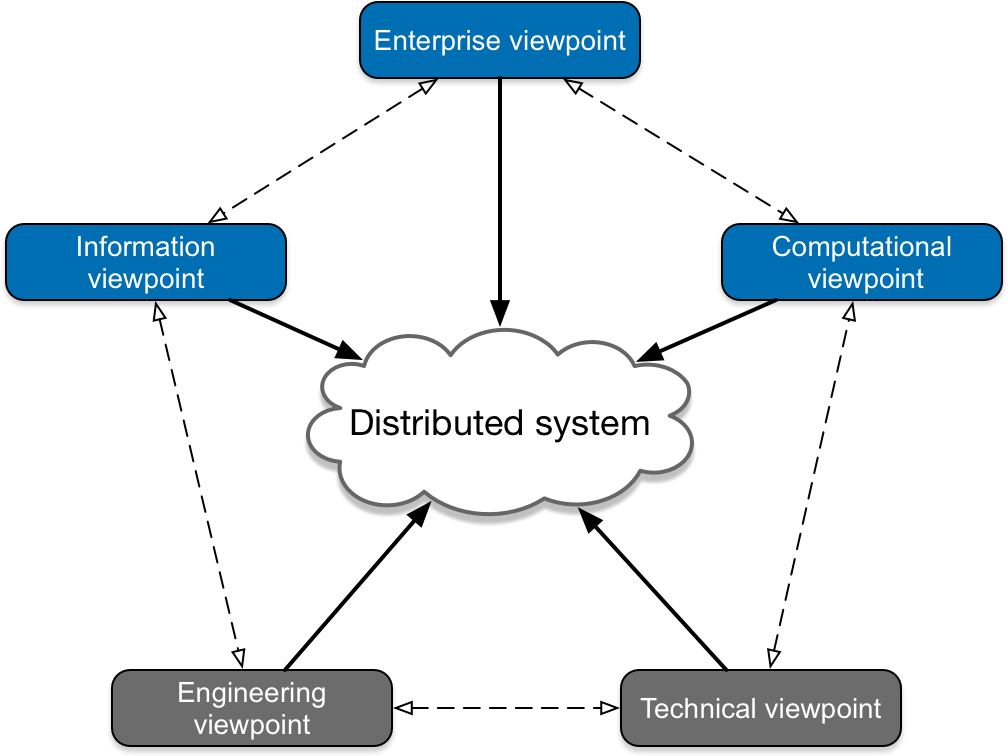The Reference Model of Open Distributed Processing (ODP-RM) is a reference model in computer science which provides a framework to describe the architecture of open, distributed, processing (ODP) infrastructures; whenever possible ODP-RM uses a formal description techniques for specification of the architecture, in order to guarantee consistency and reliability of such description1.
This framework is composed of two main approaches:
-
Object modelling: Object-oriented modelling (OOM) is an approach used to model applications and systems by applying the object-oriented paradigm to the entire system. Object modelling usually applies to the modelling of dynamic systems (e.g. business processes) as well as to static structures (components of a system)
-
The description of the system in different viewpoints (Viewpoint Modelling): it is an effective approach when dealing with complex systems as it represents the subdivision of the specification of a complete system. Despite being relatively independent, the viewpoints are interconnected as some of the key items are identified in other viewpoints.
Of the five viewpoints of ODP-RM, three are used in this higher-level reference architecture; all of which are described in the context of the Reference Model for SSH Data Infrastructures, RM-SSH:
- the Enterprise viewpoint which describes, the communities, roles, and behaviours of the system,
- the Information viewpoint which identifies the informational objects,
- and the Computational viewpoint which describes the computational elements that act upon the informational objects.
Note: Neither the engineering nor the technical viewpoints will be considered in this reference architecture at this point in time. The engineering viewpoint focuses on the mechanisms and functions required to support distributed interactions between objects in the system and therefore, it may be valuable, in the future to consider the engineering viewpoint for some aspects of the architecture.
-
Additional examples of use of ODP for humanities infrastructures can be found as part of the EHRI Information Architecture ↩

 The five viewpoints of ODP-RM
The five viewpoints of ODP-RM